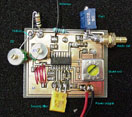 Automatic Frequency Control (AFC)
Automatic Frequency Control (AFC)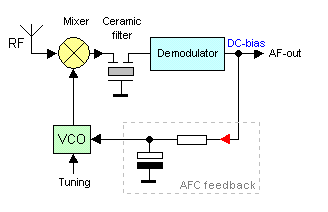 In simple words you can say that the AFC will lock the receiver to any valid RF signal.
To the right you can see a basic block diagram of an receiver. The RF signal enters a mixer (yellow) and mixes with the VCO (green).
The VCO can be a coil and a tuneable capacitor.
The product from the mixer is filtered and enter the demodulator(blue) to bring out the sound
from the FM signal.
In simple words you can say that the AFC will lock the receiver to any valid RF signal.
To the right you can see a basic block diagram of an receiver. The RF signal enters a mixer (yellow) and mixes with the VCO (green).
The VCO can be a coil and a tuneable capacitor.
The product from the mixer is filtered and enter the demodulator(blue) to bring out the sound
from the FM signal. 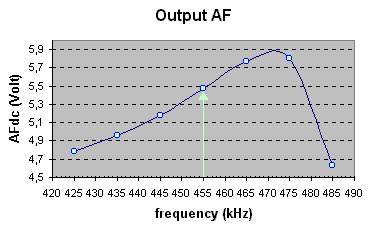 Okey, look at the diagram at right.
Okey, look at the diagram at right.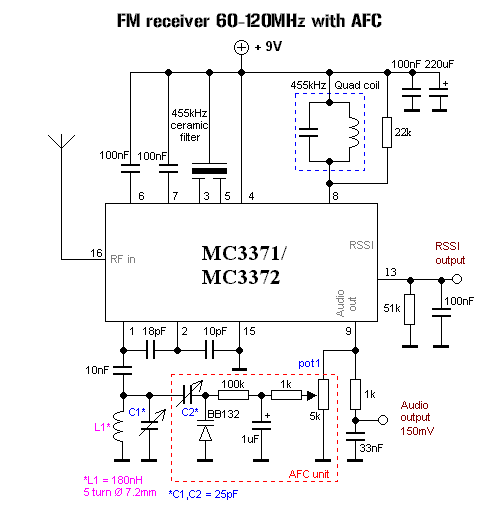
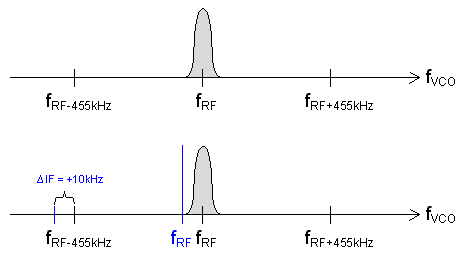
| mc3372.pdf | Datasheets for mc3371/mc3372 |
| BB132_3.pdf | Datasheets for BB132 varicap |